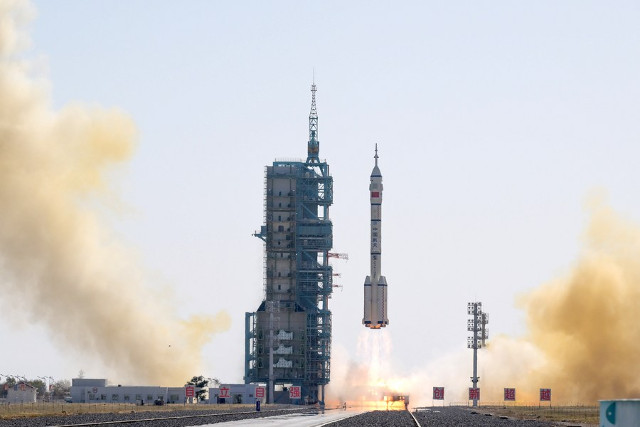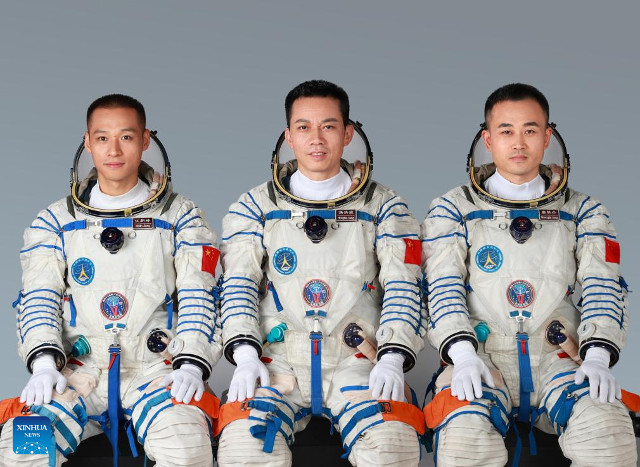
A confirmation has arrived that three Chinese taikonauts from the Shenzhou 17 mission reached the Chinese space station Tiangong with an automated docking maneuver. They blasted off about 6.5 hours earlier atop a Long March-2F rocket from the Jiuquan Satellite Launch Center. They form the sixth crew of the Chinese space station and will remain there for about six months, the standard duration for a mission.
The three taikonauts, as the Chinese call their astronauts, of the Shenzhou 17 mission are Tang Hongbo, Tang Shengjie, and Jiang Xinlin, whose names were announced only the day before the launch, as is customary for the Chinese. Colonel Tang Hongbo, 48, the mission commander, is a veteran, as he’s on his second flight. He’s the first taikonaut to return to the station, as he was part of the Shenzhou 12 mission, which was part of the first human crew of what was the space station’s Tianhe core module in 2021. The other two taikonauts are on their first space mission, and authorities only revealed that Tang Shengjie was born in 1989, making him the youngest taikonaut to serve on the Tiangong Station, and Jiang Xinlin was born in 1988.
Taikonauts from the Shenzhou 16 mission will return to Earth at the end of October, so they met with their replacements from the Shenzhou 17 mission and the two crews will work together for a few days. The meeting of crews during rotation, which is possible after the completion of the Tiangong Station’s first construction phase, is already becoming routine.
The Chinese authorities tend to be vague about the tasks being conducted on the Tiangong space station. In this case, Lin Xiqiang, deputy director of the Chinese Manned Space Agency, spoke of extravehicular experimental maintenance activities to be carried out for the first time. Lin spoke about damage to solar panels that was already identified in preliminary inspections and was caused by space debris. The damage detected is minor and doesn’t have a significant impact on electricity production but it already requires at least more in-depth inspections.
For China, each new mission represents a step forward in its national space program. Occasionally, the authorities reveal some new information about future plans, which must be taken seriously because they’re continuing to accomplish them.


